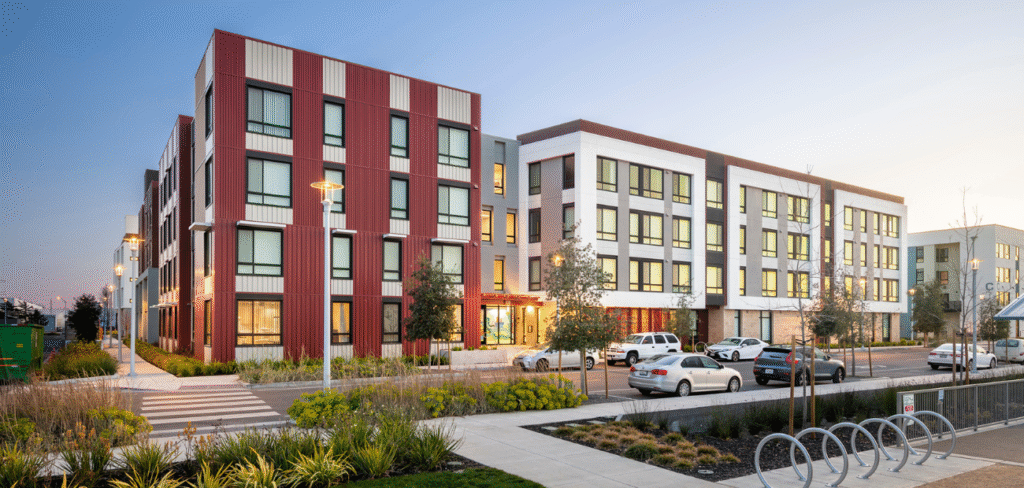Bringing CRE Home: An Overview of Today’s Asset Classes
November 4. 2025

As we move through 2025, rising interest rates, shifting demographics, and political and economic changes have reshuffled the deck across asset classes.
Investors are rebalancing portfolios with a sharper eye on cost of capital and the staying power of certain asset classes. Here’s where the major asset classes stand today.
Key Takeaways
-
Normalization After a Period of Exceptional Growth
Across multiple asset classes – especially multifamily and industrial – markets are moving from post-pandemic surges toward more balanced conditions.
-
Affordability and Capital Costs Are Driving Behavior
The affordability crisis in housing and higher interest rates across capital markets are shaping both investment and tenant demand.
-
Office Faces Structural Headwinds
The office sector continues to struggle the most, with hybrid work reducing demand and creating a deep divide between trophy assets and older buildings.
-
Experiential and Service-Oriented Real Estate Is Thriving
Sectors that deliver experiences rather than commodities – such as hospitality, experiential retail, and boutique hotels – are seeing strong performance. The “experience economy” is reshaping how space is designed, leased, and valued. -
Emerging and Alternative Sectors Are Gaining Institutional Attention
Investors are increasingly drawn to specialty asset classes like data centers, senior housing, self-storage, and build-to-rent single-family communities.
1. Multifamily
Multifamily has long been one of the most resilient asset classes, offering stability even in uncertain times. Yet after years of post-pandemic rent surges, the sector is moving into a period of normalization.
TRENDS
The affordability crisis. A striking data point illustrates the divide: homeowners today need to earn over $50,000 more annually than renters. That gap has funneled demand into Class B and C “workforce” housing, where affordability is relatively better.
Oversupply pressure in the Sun Belt. Development pipelines in Sun Belt cities like Austin, Dallas, Nashville, and Phoenix are delivering thousands of new units, leading to short-term oversupply. Many of these markets are offering concessions like two months free rent or reduced deposits.
Capital markets dynamics. Institutional investors remain committed. Still, high interest rates have made financing more complex.
OUTLOOK
While short-term pricing adjustments are likely as cap rates widen, multifamily is now the top-performing sector for expected returns over the next decade, according to CBRE’s recent survey.
2. Office
No sector has been more disrupted than office. Once the backbone of urban CRE portfolios, it is now the most challenged class in the industry. Office ranks the lowest in investor sentiment, according to CBRE.
TRENDS
Hybrid work is here to stay. For the first time in 25 years, the total square footage of U.S. office space is expected to decline. Despite shifts like JPMorgan ordering all employees back to the office five days a week, more than half (51%) of employees split time between home and office, permanently altering demand.
Geographic differences. Markets like New York City and Miami have seen stronger return-to-office recoveries, fueled by financial services and tech relocations. Meanwhile, San Francisco, Chicago, and Portland continue to struggle with vacancies (at the end of 2024, San Francisco had the highest office vacancy rate, and Chicago’s downtown vacancy is now at a record high).
Flight to quality. Trophy and Class A+ buildings in prime locations (like Manhattan’s 22 Vanderbilt with its coffee shop and cocktail bar) continue to lease. Conversely, Class B and C properties face declining occupancy and falling rents.
OUTLOOK
Conversions to residential are accelerating. Developers are reimagining obsolete offices as residential apartments, life sciences labs, or mixed-use hubs. Policy incentives may play a role, as cities attempt to revive downtowns through adaptive reuse.
3. Industrial & Logistics
Industrial has been one of CRE’s top performers, powered by e-commerce and the reconfiguration of supply chains. While demand remains healthy, the sector is transitioning from hyper-growth to steadier performance.
TRENDS
E-commerce and re-shoring. Online shopping continues to expand, and geopolitical pressures are leading to more domestic manufacturing. Both trends reinforce the need for modern warehouses close to major population centers.
Rising vacancy. The national industrial vacancy rate reached 7.1% in Q2 2025, the highest since 2015, as the enormous supply wave of 2020-22 catches up with demand.
Investor sentiment. Industrial remains a favorite among institutional investors, though high interest rates are causing cap rate expansion.
OUTLOOK
Industrial remains a favored asset class, though investors should expect moderation compared with the explosive years of 2020 through 2022.
4. Retail
Who said retail was dead? For years, “retail apocalypse” headlines predicted a future dominated by e-commerce. But 2025 has revealed surprising resilience.
TRENDS
Grocery-anchored strength. Supermarket-anchored centers remain some of the most sought-after investments, offering stable foot traffic and recession-resistant demand.
Discount demand. Off-price retailers like TJX, Ross, and Dollar General are fueling leasing momentum.
Luxury rebound. High-end retail corridors in New York, Miami, and Los Angeles are thriving again. Tourism, international buyers, and luxury brand expansions have pushed rents in these corridors to new highs.
OUTLOOK
Retail’s future lies in experiential retail formats. From immersive flagship stores to fitness-retail hybrids and dining-driven centers, the focus is on making shopping an event.
5. Hospitality
Hospitality endured the deepest downturn during COVID-19 but has staged a robust recovery. Performance, however, varies by location and product type.
TRENDS
Leisure demand dominates. Resorts and coastal destinations continue to benefit from pent-up leisure travel. Leisure travel spending is predicted to triple by 2040.
Boutique and lifestyle. In urban markets, boutique hotels and lifestyle concepts are outpacing traditional chains. Travelers increasingly seek “experiential” stays over standardized rooms.
Investor intentions. According to CBRE’s 2025 U.S. Hotel Investor Intentions Survey, 94% of respondents plan to maintain or increase hospitality allocations this year—a strong signal of confidence.
OUTLOOK
The outlook is positive, especially in experiential destinations that blend leisure, lifestyle, and luxury.
6. Specialty / Emerging Asset Classes
While traditional CRE sectors attract the lion’s share of capital, specialty and emerging asset classes are increasingly shaping the industry’s future.
- Data Centers: Perhaps the single hottest segment today, data centers are benefiting from cloud growth, artificial intelligence, and digital infrastructure needs. Rents are rising sharply, and demand shows little sign of abating.
- Senior Housing. Demographics are destiny. With aging Baby Boomers, demand for assisted living, memory care, and independent living is projected to surge. Investors are cautiously returning after pandemic challenges.
- Self-Storage. Once a niche, self-storage has become mainstream. It posted $3 billion in investment volume in 2024, with another $855 million transacted in Q1 2025 alone. Low operating costs and steady demand make it an in-demand asset.
- Build-to-Rent Single-Family Homes. With affordability challenges pushing many households out of homeownership, BTR communities are attracting institutional capital. These developments offer suburban living with professional management, appealing to families priced out of buying.
The commercial real estate landscape in 2025 is defined by divergence and adaptation. Traditional sectors like multifamily and industrial continue to provide stability, albeit at a slower pace, while office faces structural reinvention amid hybrid work realities. Retail and hospitality have proven their resilience through innovation and experiential appeal, defying earlier pessimism.
At the same time, emerging asset classes – from data centers to build-to-rent housing – are reshaping investment strategies, offering new avenues for growth and diversification. Across all sectors, investors must navigate an environment of higher borrowing costs, shifting demand patterns, and evolving user preferences, favoring quality, flexibility, and long-term fundamentals.
In short, 2025 is not a return to the old normal, but the emergence of a new equilibrium – one where creativity, adaptability, and strategic positioning/thoughtful analysis will define the next decade of real estate success.
About Jack Mullen of Summer Street Advisors:

As Founder & Managing Director of Summer Street Advisors, Jack Mullen leverages decades of experience in valuation, underwriting, and risk management to lead multi-million and multi-billion dollar CRE transactions.
Previously with GE Capital and large institutional banks, he has shaped investment strategies for some of the industry’s largest deals. A recognized leader, his insights are featured in GlobeSt.com and CREFC Finance World, and he is a sought-after speaker at industry conferences and top universities.
For strategic advice on your portfolio or transaction, contact:

